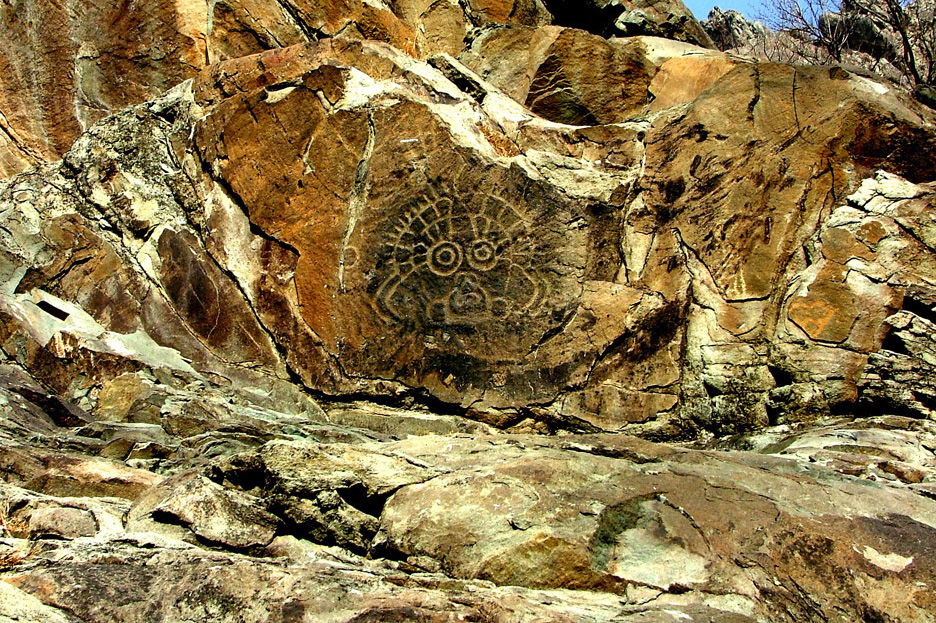Ningxia preserves and rejuvenates traditional culture

The rock paintings in the Helan Mountains were done by different ethnic groups over different periods, covering themes of nomadic life, animals, human images, sacrifice to gods and so on. Photo: CHINA.ORG.CN
Since it was established six decades ago, the Ningxia Hui Autonomous Region in northwest China has witnessed flourishing culture. Ningxia has made new historic achievements in the construction of public cultural service facilities, the production of fine arts and literature, the protection of cultural heritage, and the development of cultural industries, especially since the 18th CPC National Congress in 2012.
As of 2017, the region has 26 public cultural centers, 26 libraries, 61 museums, 237 township/sub-district cultural stations, 2,782 comprehensive cultural service centers at the village/community level, 730 cultural centers for rural residents, and 1,136 folk literary and art teams. These form a five-level network of public cultural service facilities covering urban and rural areas.
Ningxia has a rich historical and cultural heritage, said Ma Jianfu, an associate professor at North Minzu University. The cultural imprint left by the ancient Silk Road connects Ningxia and the world.
In addition to the Silk Road culture, more and more characteristic cultural brands from Ningxia are spreading to the whole country and to the world, including Red culture, Hui culture, Xixia culture, Yellow River culture, the Rock Art of the Helan Mountains and frontier military culture.
Cultural heritage protection is valued. In recent years, Ningxia has successively implemented a number of key cultural heritage protection projects such as the Xixia Mausoleum, the Dong Residence, the Xumi Mountain Grottoes and the Great Wall, and it has participated in the third national survey on cultural relics and the Great Wall resources survey.
As of 2017, the total number of non-movable cultural relics in the region reached 3,818. The Shuidonggou site, the Xixia Mausoleum and the Kaicheng site have been listed in the 150 major heritage sites of the country. Two were included in the annual top ten national archaeological discoveries. In terms of the protection of intangible cultural heritage, Ningxia has also achieved great success. The region currently has one UNESCO intangible cultural heritage site, 18 representative intangible cultural heritage sites at the national level, and 99 sites at the autonomous regional level. Furthermore, nine prefectures, districts, counties and towns are cited as a Hometown of Folk Culture and Art in China.
At its most fundamental, the work of passing down fine traditional Chinese culture is the study of ancient books. In mid-September, the Shuofang project, financed by the National Social Science Fund of China, released its first batch of works in Yinchuan, capital city of Ningxia. Historical records, rare ancient books and archives either of Ningxia or unearthed in Ningxia were compiled.
Hu Yubing, the project’s chief expert and dean of the School of Humanities at Ningxia University, said that in addition to presenting academic works in various forms, the project will also prepare popular reading materials that are easy to understand and open to the public, so as to promote Ningxia’s branding and culture.
Academic research has made great contributions to Ningxia culture’s going global. For example, today’s Ningxia has become a major hub for Xixia studies, which presents Xixia culture on the international stage.
(edited by JIANG HONG)
